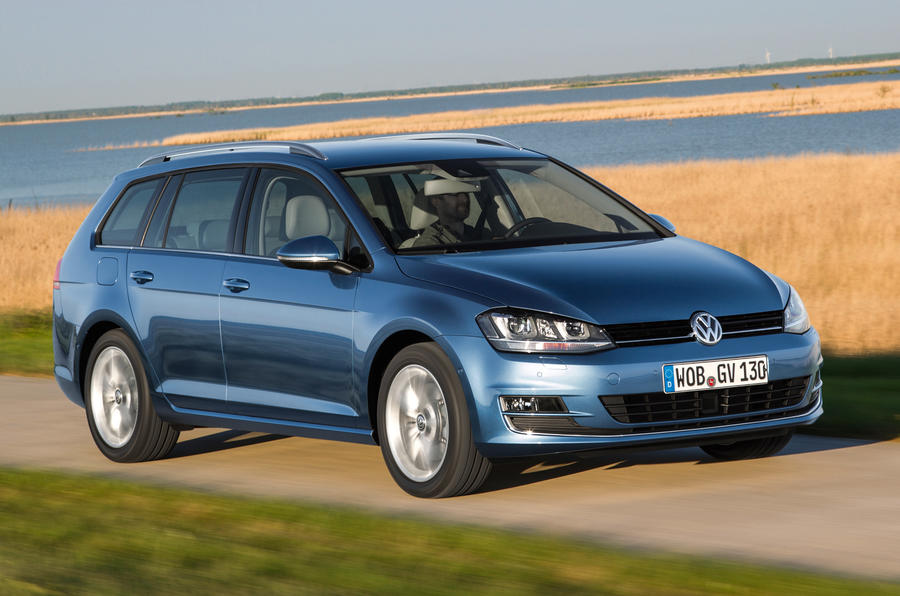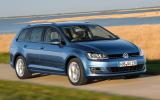What is it?
This is the new Volkswagen Golf Estate, the latest, not to mention lengthened and larger-booted, incarnation of the seventh-generation hatchback.
From the rear door handles forward you’ll be struggling to split the estate and the hatchback as they’re all but identical — save for the estate’s as-standard roof rails. The two share an MQB platform and wheelbase but the estate has been stretched by 307mm over the hatch to 4562mm.
All that extra length is aft of the rear wheelarch, giving the estate both a sizeable rear overhang and a usefully larger boot — 605 litres with the rear seats upright, expanding to a full 1620 litres with them folded (the hatch offers 380/1270 litres). Interestingly, the larger Volkswagen Passat estate has two litres less boot space than the Golf estate with its seats in their upright position, but its boot expands to 1731 litres with them folded.
Choice of engines will be a surprise to no one. Petrols consist of 83 and 104bhp 1.2-litre and 120 and 138bhp 1.4-litre TSIs, while the diesel line-up consists of 89 and 104bhp 1.6-litre and 148bhp 2.0-litre TDIs.
The least powerful 1.2 TSI gets a five-speed manual gearbox and the 104bhp 1.2 and all the 1.4 TSIs can be had with a six-speed manual or a seven-speed dual-clutch automatic gearbox.
Diesels get a similar but not the same gearbox choice, with the lowest-power TDIs available with a five-speed manual gearbox in S trim or the option of a seven-speed dual-clutch ’box in SE spec, while the 2.0 TDIs have either a six-speed manual or six-speed auto ’box.
We drove the 148bhp 2.0 TDI SE with a six-speed manual gearbox, which retails at £22,990 – £765 more than the 2.0 TDI SE five-door Golf hatch.





















Join the debate
Add your comment
Skoda Octavia a much wiser choice.
Why would you buy this, when you can buy the bigger, better, Skoda Octavia Estate for virtually the same money? After Skoda being under the VW umbrella for over 22 years, surely badge snobbery has died now, unless you've been living under a rock like Patrick Star all that time!
That one is £29k
Had a play on the VW configurator; the car in the photos is a GT spec with leather, sat nav, heated seats and climate control (let alone what I can't see which could add another £1k+). That, with the metalic paint will set you back a little over £29k before haggling. Not surprising VW supply a fully loaded car for photos, but a run of the mill 1.6 TDI SE won't look nearly so inviting and given a search on Autotrader brings up a few new 2.0 TDCi Focus Estates in Titanium trim for around £16k, the Golf starts to look very pricey even if it is the better car.
Its a lot of extra space, for
Its a lot of extra space, for not a lot of extra cash.
But having spoken to a friend with an early MK7 Golf i think its probably better to let them iron out all the bugs first, as he has had both rear suspension and Turbo issues